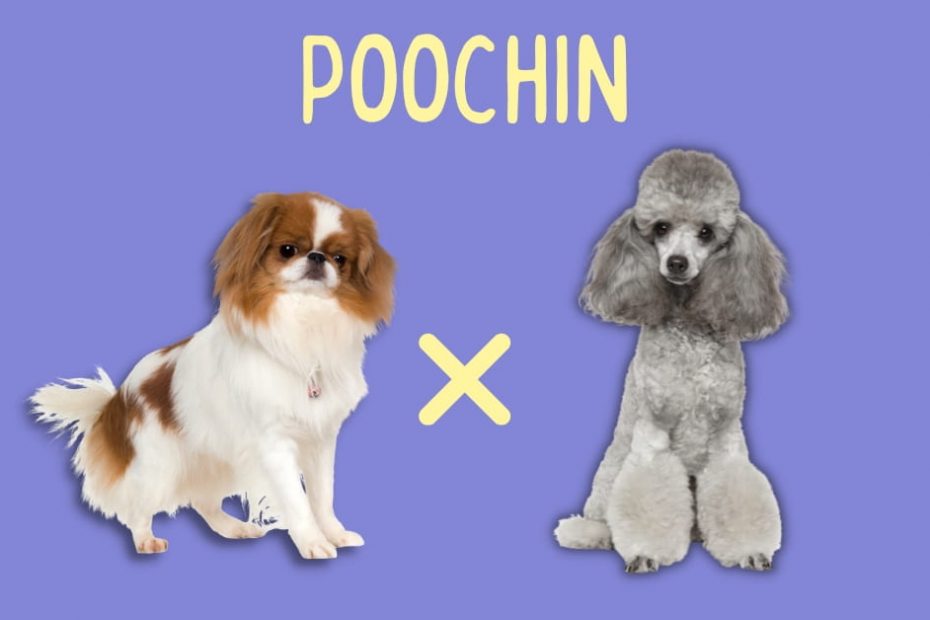When it comes to designer breeds, Poochins aren’t the most well-known choice. But this adorable cross between a Poodle and a Japanese Chin makes the perfect companion.
With a great temperament, hypoallergenic qualities, and an adorable nature, this uncommon mixed breed is interesting, to say the least.
If you’re thinking about getting your own Poochin or want to know more about the breed, this complete guide will give you all you need to know.
What is a Poochin?
A Poochin is a cross between a Poodle and a Japanese Chin. It’s also commonly called a Chinpoo, Chin Poo, Chin-a-poo, Japapoo, and Doodlechin.
The Poochin is a toy-sized Doodle breed. Despite the rising popularity of Poodle-mixes, it is a rare dog breed.
The Poodle was originally bred in Europe as a hunting dog that didn’t shed. The Japanese Chin was bred as a companion dog in China and Japan.
The Poochin is a designer breed that doesn’t shed, has a wonderful temperament, and is an adorable companion for the home.
History of the Parent Breeds
To understand more about the Poochin, it’s important to know the detailed history of both parent breeds.
Japanese Chin
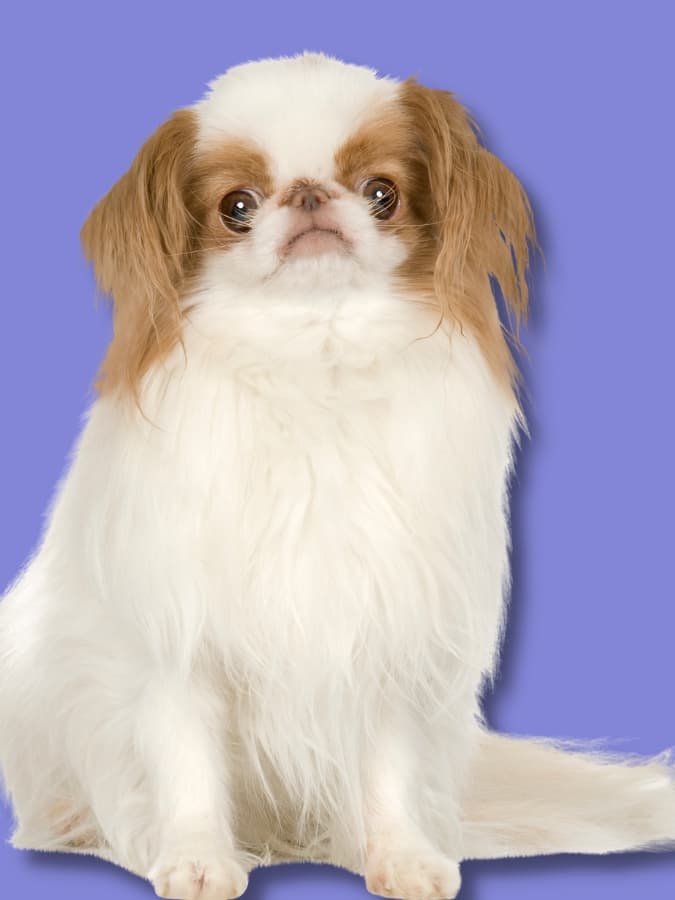
Contrary to its name, the Japanese Chin was bred initially in China, dating back to the fourth century. Those original Chin sat upon the laps of the Chinese aristocracy and were companions of the women of the Imperial Palace.
The breed then began becoming popular in Japan. In Japan, there are Inu (dogs) and Chin. Unlike Inu, Chin are royalty and the direct descendants of those from fourth-century China.
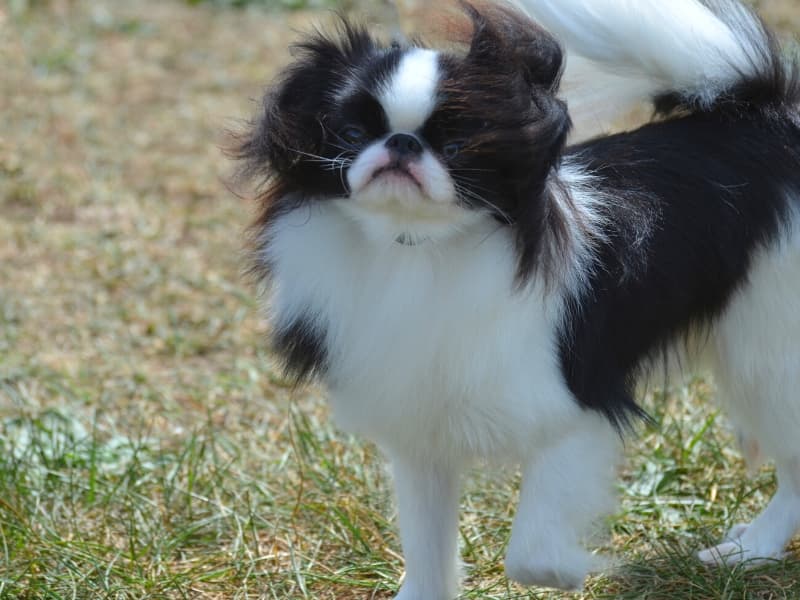
Historic artifacts within monasteries and temples show that Chin are closely related to the Pekingese, Shih Tzu, Tibetan Spaniel, and Lhasa Apso. All of these breeds were honored for their ties to the Buddhist Lion Dog – the protector of Buddha.
Poodle
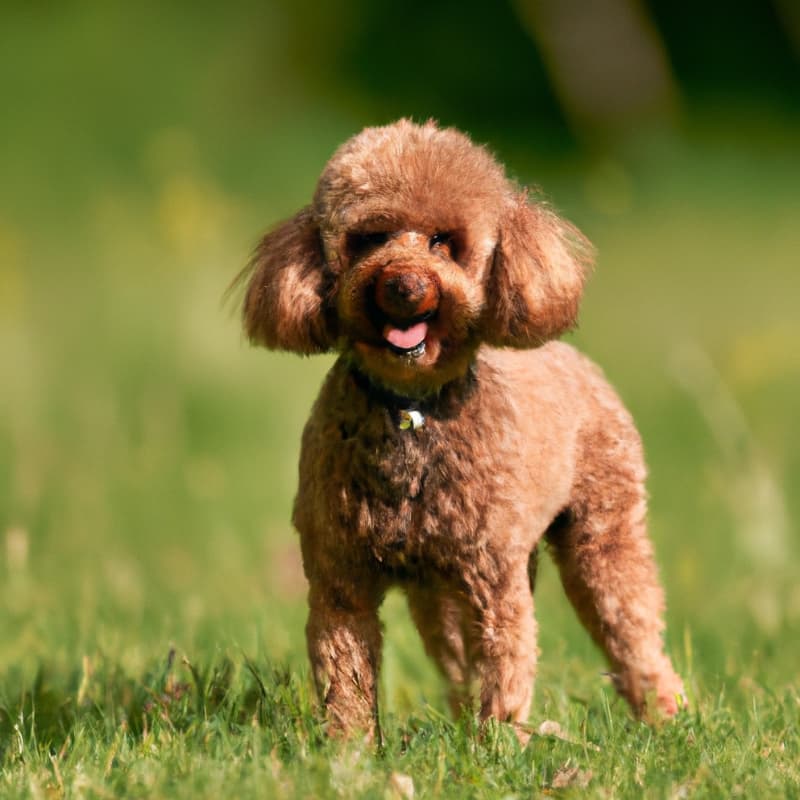
The Standard Poodle was first bred in Germany as a waterfowl hunting dog. Although the exact origins are unknown, there is evidence to suggest the Poodle has been around since the 1400s.
The Standard and Miniature varieties were used across Europe for duck hunting and truffle sniffing, prized for its coat that didn’t shed. However, the toy variation served only as companions.
Over time, the Poodle became associated with the aristocracy, and even the Standard variety became companions rather than hunting dogs.
Although common in Europe, the Poodle was rare in the United States until the end of World War II. By the 1950s, the breed was extremely popular and was recognized by the American Kennel Club in 1887.
Poochin Pictures
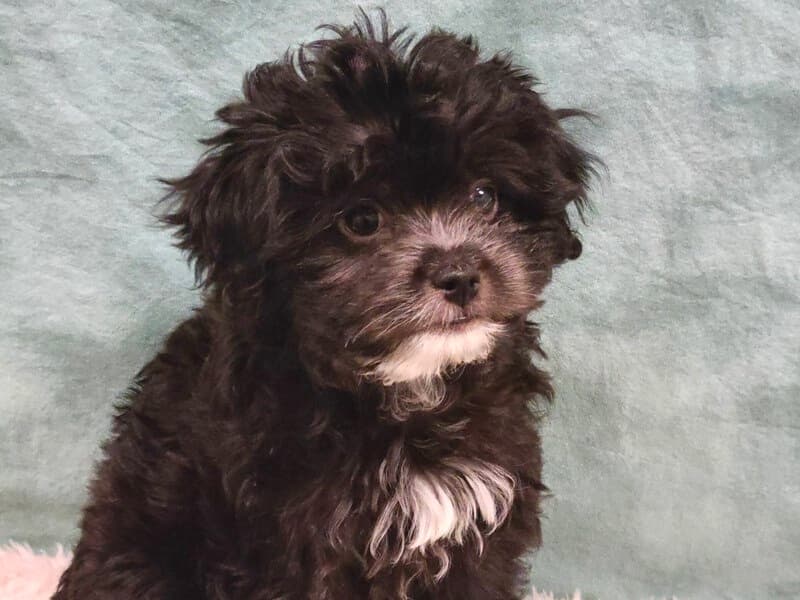
Appearance
The Poochin takes different traits from the Japanese Chin and the Poodle. Most hybrids are bred with the Toy Poodle to maintain a smaller size, although they can be larger if crossed with Mini Poodles.
Toy Poodles have large floppy ears, dark eyes, and tufts of curly hair. They are loved for their miniature size and variety of colors.
On the other hand, Japanese Chins have larger, broad heads, wide-set eyes, and broad muzzles. They have long, silky hair, feathered ears, and a plumed tail.
The Poochin can take on the characteristics of either parent, and features vary. They generally have round heads, broad muzzles, and medium-sized noses.
Dark eyes and folded ears make their adorable dogs, and the moderate feathering of the fur is a beautiful combination of both parent breeds.
Even though Poochins are very small, they have sturdy bodies and legs and a tail that often curls over the back.
Coat Type
A Poochin coat can be challenging to groom and maintain since the Poodle coat is dense, and the Japanese Chin’s coat is a little longer and finer.
Most Poochins have short, fluffy hair that needs to be brushed several times a week to avoid tangles and matting. They also need regular baths since the fur doesn’t release dirt well with brushing alone.
Since the Poodle doesn’t shed, Poochins aren’t known for shedding and have hypoallergenic qualities.
Coat Colors
Poochins come in various colors since both Poodles and Japanese Chins have wide variations. The most common colors you’ll get include:
- White
- Red
- Sable
- Silver
- Cream
- Grey
- Lemon & White
- Red & White
- Brown
- Black
Since the Japanese Chin can have patterns and multiple colors, you will also find Poochins with patches, blended colors, or patterns in the fur.
Size
The Poochin is a small dog. It’s impossible to say how large a Poochin will get without seeing both parents; the actual size will depend on its genes.
However, we can look at averages based on both dog breeds.
Height
The average Japanese Chin is nine to ten inches tall, whereas the average Toy Poodle stands at nine to eleven inches.
If the breeder crosses with a Miniature Poodle instead of a Toy Poodle, your Chinpoo might be considerably taller. This is why it’s always best to look at the parents before committing to a puppy.
Weight
Chinpoos are known for their adorable size and weigh, on average, between 3 and 13 pounds, depending on gender. Female Poochins will be smaller than male Poochins.
Toy Poodles are pretty tiny, weighing an average of five pounds. On the other hand, the Japanese Chin can range from three to fourteen pounds, depending on the lineage and gender.
Traits & Characteristics
The infographic below shows the Japanese Chin-Poodle mixes’ different characteristics.

Temperament & Personality
The Poochin designer breed makes an excellent companion dog. They are playful, friendly, and have a quiet manner. Due to their small size, they don’t need much physical activity and enjoy spending a quiet afternoon perched on a lap.
Their temperament makes them ideal for older or less active owners who want a quiet companion. They are also great for small kids since they are patient and happy from puppies to adulthood.
They are loyal dogs and love spending time with all their family members.
If you’re looking for a quiet dog, Poochins aren’t known to bark frequently and can easily socialize with other dogs from an early age.
Consistent socialization from an early age will also help decrease anxiety and boost the acceptance of people, which can be an issue if this miniature breed isn’t properly socialized.
Poochins don’t need too much exercise. Luckily, as a smaller breed, they will tire out after a long walk. Poochin puppies, on the other hand, might require a bit more effort.
Common Health Issues
Since the Poochin is a hybrid of a Poodle and a Japanese Chin, it’s susceptible to all common health issues that affect both breeds. However, there isn’t any way to predict whether or not a puppy will have health issues, and there is no guarantee that your dog will have any problems.
Since Poochins are a hybrid dog breed, they benefit from having a lower risk of inheriting breed-specific diseases. A purebred dog carries a higher risk of health issues found in their bloodline.
A purebred Poodle is susceptible to a range of health issues, but the most common are:
- Luxating patellas – when the knee caps temporarily slip out of place.
- Legg-Perthes disease – when the blood supply to the femur is disrupted and causes issues.
- Progressive retinal atrophy – deterioration of the eyes that can lead to night blindness or total blindness.
- Epilepsy – seizures caused by a brain disorder.
- Gastric Dilatation Volvulus (GDV) – commonly known as ‘bloat,’ the stomach twists and requires immediate attention.
- Hip dysplasia – poor development that leads to arthritis.
- Von Willebrand’s Disease – a blood platelet deficiency that can cause excessive bleeding.
- Cardiomyopathy – an enlarged heart.
- Cushing’s disease
The Japanese Chin is more prone to minor health concerns, including:
- Cataracts
- Heart murmurs
- Patellar luxation – an issue with the knee cap that causes discomfort.
- Entropion – inward-turning eyelids that cause irritation.
- Eye infection
Lifespan
Both Poodles and Japanese Chins have relatively long lifespans, ranging from 12 to 15 years if there are no underlying health conditions.
A 2019 American Animal Hospital Association study showed that mixed breeds live longer than the purebreds they are mixed from, so Chinpoos can live to 15 years or more.
Diet
Luckily, the Poochin is a toy-sized dog (or close enough). They won’t require much food compared to a larger-sized dog. It is still important to feed them quality food.
A good idea is to meet with your veterinarian to get additional information on what food would be best for your Poochin puppy.
Final Thoughts
Poochins aren’t as well-known as other designer breeds but make fantastic pets. Whether you have kids, are looking for your first family dog, or are retired and want a quiet companion to keep you company, a Chinpoo could be a perfect choice.
They’re a little harder to find than common breeds, but they’re worth the research. Small, fluffy, and incredibly loving, you’ll immediately fall in love with any Poochin.
Now, you better start searching for available puppies!

